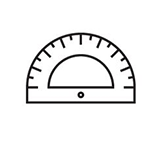매우희귀한 오징어화석(Rare preservation Jurassic Squid fossil)120816-1 


판매가 1600000
할인판매가 1,600,000원 총 할인금액 원 (모바일할인금액 원)
적립금
- 0원(0%)
-
원 %
-
원 %
-
원 %
-
 원 %
원 %
-
원 %
-
원 %
-
원 %
-
원 %
| 국내/해외배송 | |
|---|---|
| 배송비 방법 | 택배 |
| 배송비 | 4,000원 (50,000원 이상 구매 시 무료) |
| 수량 |
|
| 상품 정보 | 가격 | 삭제 |
|---|---|---|
| [총 상품금액(수량)] 0 (0개) | ||
일반명 : 희귀하게보존된 쥬라기오징어화석(Rare preservation Jurassic Squid fossil)
학명 : Plesioteuthis prisca
분류 : 두족강(Cephalopoda), 코레오이데아강(Coleoidea), 살오징어목(Teuthida)
지질시대(Geological Time) : 중생대 후기 쥬라기(Upper Jurassic 150 million years ago)
지층 : 졸렌호펜층(Solnhofen Lithographic Limestone Formation)
발견지(Fossil Site) :독일(plattenkalk Malm Zeta 2, Eichstatt, Germany)
크기(Size): 오징어(Squid) fossil is 180mm on a 270 x 200mm is plate
전세계 어디에서도 볼 수 없는 희귀하고 복잡하게 보존된 다양한 화석의 발견지로 유명한 남부독일의 쥬라기지층인 라이트그레픽석회암은 화석계에서는 전설로 여겨지고 있다.
이 지역의 채석장에서 화석의 발굴은 오로지 손으로만 하는 민간운영의 작은 규모로만 하고 있다.
최고등급의 화석을 얻기 위해서는 아주 많은 화석이 들어있는 암석을 발굴해야만 겨우 얻을 수 있다. 최고의 화석은 대부분 자신의 채석장(발굴지역)을 가지고 있는 주인들에 의해 보존된다. 일부 채석장은 대규모로 발굴되는데 이것은 손이 아니라 장비를 투입하기 때문에 가능하다. 그렇기 때문에 퇴적석회암의 손실이 많아지므로 화석들은 더욱 희귀하게 된다. 모든 수단을 동원하면 할수록 화석은 줄어들고 종종 괜찮은 졸렌호펜화석이 발견되었을 때 이것은 시장에서 아주 중요하게 거래가 된다. 가끔 오래된 개인 소장품들이 시장에 나오는데 이런 기회야 말로 수준 있는 표본을 구할 수 있는 좋은 기회가 된다. 어디나 마찬가지이지만 여기도 초기에는 좋은 표본이 많았지만 지금은 아주 가끔 그런 표본을 만날 수가 있다.
주지의 사실이지만 연체부위의 화석은 그야말로 화석을 수집하거나 연구하는 사람들에게는 꿈을 실현하는 일이다. 공룡피부화석도 그렇지만 여기의 표본처럼 오징어화석 이야말로 한번 만나고 싶은 화석이다. 이 화석의 연체부위가 어떻게 되었을까는 화석 모암의 뒷면을 세밀하게 관찰하면 작은 정보를 얻을 수가 있다. 전문가들만이 알 수 있는 정보인데, 그것은 윗면의 움푹 들어간 부분이 크다면 연체부분이 큰 부분 이었다고 유추할 수 있다. 그것은 넓은 면적을 가지고 있다가 연체부분이 광물로 치환되면서 상대적으로 더 많이 축소되기 때문에 일어나는 현상이다. 직접 관찰하면 더 흥미를 가질 수 있을 것이다. 이런 표본을 보여줄 수 있어서 개인적으로 행복하다.
Famous for producing an astonishing diversity of rare and most intricately preserved fossils found anywhere in the world, the Jurassic lithographic limestone deposits of southern Germany are legendary. Quarries in the region are privately held and mostly worked by hand on a small scale.
The finest grade fossils are few and far between and much rock must be split to locate them. The best fossils are most often kept by the quarry owners who themselves, are often collectors.
Some quarries are operated on a large scale but these are now dug with machinery instead of manual labor. Because of this the rock is damaged and along with it, the rare fossils. What all this means today is that even fewer fine grade Solnhofen fossils are found and when they are, rarely do the best pieces make it to market. Occasionally, an old private collection surfaces and specimens are sold or traded. This is where the rare opportunity comes along to acquire a specimen on a level that truly is a prize find. Typically, the older material is often the best as it was collected when the deposits were first being worked and quality was in greater abundance.



















 확대보기 및 상세정보
확대보기 및 상세정보